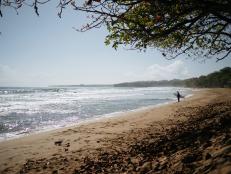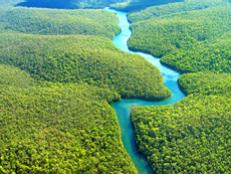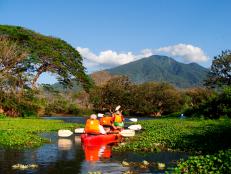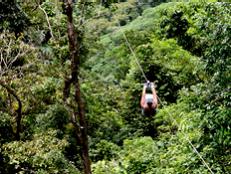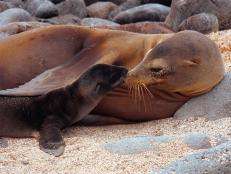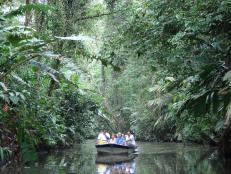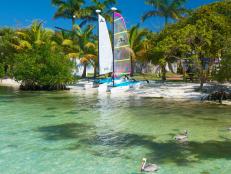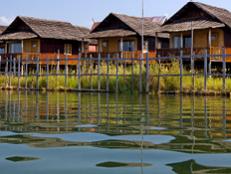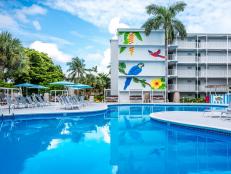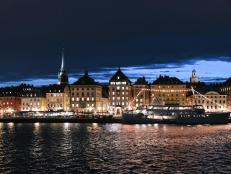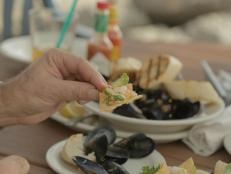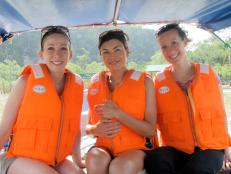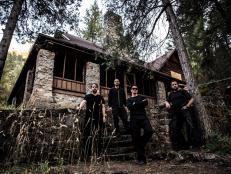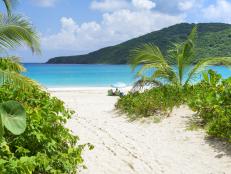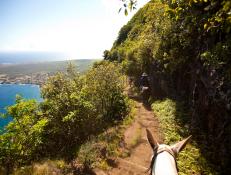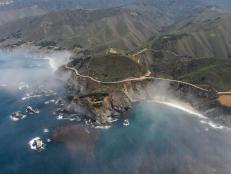The Galapagos Islands Guide: What You Should Know
When to go, what to see, what to pack and more.
When to Go
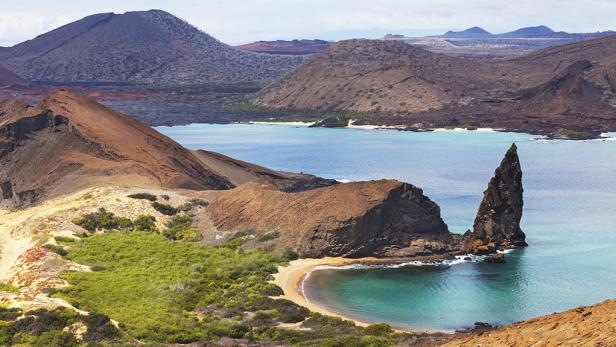
Thinkstock
The cooler, dryer season is June through November, thanks to the Humboldt Current which brings chilly water and cooler temperatures (in the 70s). Though the seas are rougher, experienced divers believe it’s the best time to visit because colder water attracts even more fantastic marine life (such as big schools of hammerhead sharks). It’s also when visitors have a better chance of spotting legendary whale sharks at Wolf and Darwin islands.
Tours
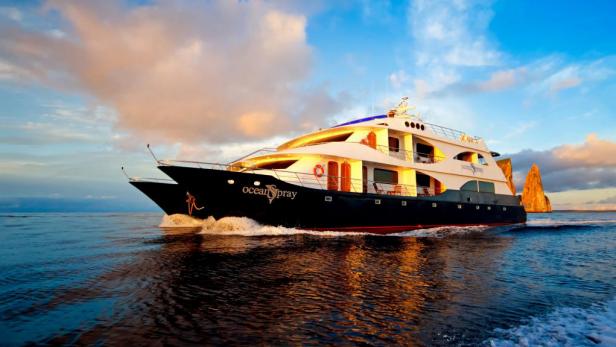
Adventure Life
It’s best to book at least a few months in advance because boats often fill up during high season. You might find last-minute deals at deep discounts at travel agencies in the Mariscal district of Quito or along Avenida Charles Darwin in Puerto Ayora, but you’re taking a serious gamble with even finding an opening, or may have to wait awhile or resign to traveling on a lower-quality ship.
How to Get There

Thinkstock
Your best bet for getting to the Galapagos is to fly into Baltra Island before taking a bus and ferry ride to Puerto Ayora on Santa Cruz Island, the most popular tourist hub. Another option is to fly into the capital of Puerto Baquerizo Moreno on San Cristobal Island, but most cruises start in Santa Cruz. You can book through domestic airlines such as TAME, LAN, or Aerogal.
Many tours don’t include flights in their package prices, but ask about booking flights through the cruise company you're considering selecting. Some companies charge a fee for booking those internal flights on your own, since they may pre-arrange group flight bookings with the airlines to ensure best rates and that everyone arrive on the same flight.
Where to Stay

The Leading Hotels of the World, Ltd.
When flying into Guayaquil, Hotel Oro Verde Guayaquil is a convenient option because it offers a free shuttle to the hotel (which is only about a 10-minute ride away), and has good service.
Most Galapagos tours begin and end in Santa Cruz. You might want to spend an extra night and splurge on a stay at the Finch Bay Eco Hotel. A quick ferry ride from the dock at Puerto Ayora, it has its own secluded beach where you can snorkel, kayak and swim.
What to Do
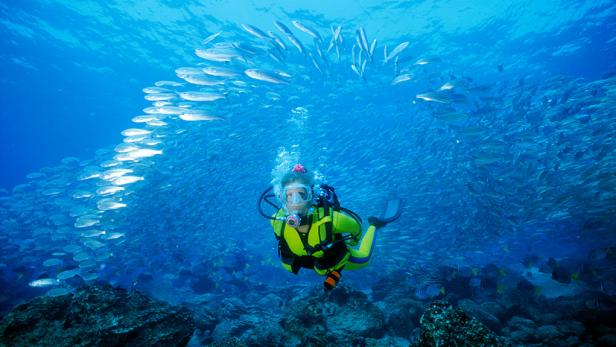
Perspectives / Getty Images
• Diving. Liveaboards will take you to the best dive spots on Wolf and Darwin Islands, where you might see hammerhead sharks, whale sharks, eagle rays, large schools of jack fish and much more.
• Snorkeling. No matter which island you’re snorkeling off of, you’ll likely be swimming alongside sea lions and Pacific sea turtles. Isla Lobos and Kicker Rock off of San Cristobal are excellent spots.
• Hiking. Trek over dried lava beds along the rim of one of the archipelago’s active volcanoes or into the highlands to see a variety of vegetation. A good bet is hiking around Sierra Negra, the world’s second largest crater, on Isabela, the biggest island which also boasts 6 volcanoes.
• Kayaking. You can rent kayaks without a guide at Tortuga Bay in Santa Cruz.
• Surfing. Rent boards in port towns such as those in Santa Cruz and San Cristobal.
• Volunteering. You’ll find opportunities that can include working on a farm or helping with habitat restoration through EcuadorVolunteers.org and Ubelong.org.
Must-See Animals and Areas
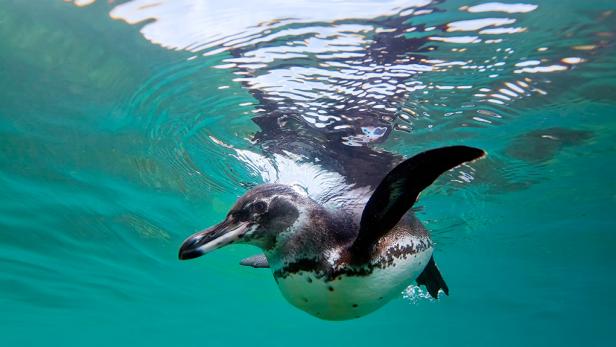
Barcroft Media / Getty Images
• Penguins. You’ll find the biggest population of Galapagos penguins around Tagus Cove (as well as about 35 percent of the archipelagos’ giant tortoises) on Isabela. Most cruises stick to the southern and central islands in the archipelago, but try to put this western island on your itinerary to see some wildlife gems. You’ll also see The Wall of Tears here, a stone wall remnant from the old penal colony built by prisoners with no purpose other than to serve as punishment.
• Marine iguanas. Fernandina has the largest colony of marine iguanas in the archipelago, in addition to a big sea lion colony at the visitor spot Punta Suarez and flightless cormorants. It’s also the youngest and most volcanically active island.
• Albatross. Punta Espinosa in Espanola is the place to go to spot the largest seabird with a wingspan of 2.5 meters. Albatross’s almost entire population nests on this island from April through November.
What to Pack

Aqua Lung International
• Binoculars
• Swimsuit
• Swim mask and fins. Tours usually provide them for snorkeling, but you don’t want to miss a marine-life spotting because you’re fiddling with ill-fitting gear. The best we’ve found are Aqua Lung’s Linea mask (advanced-fit technology means a better seal) and Shot FX fins (a spring-loaded foot strap makes for an adjustment-free fit).
• Sun hat, sunscreen, sunglasses
• A long-sleeved shirt with UPF. Wear it when you’re hiking or even snorkeling for extra sun protection.
• Refillable water bottle to reduce plastic waste.
• Motion sickness medication for boat tours.
• Quick-dry clothing. Try breathable, odor-resistant Merino wool material like the briefs, socks, and T-shirts from Icebreaker.
• Rain gear. Consider a waterproof jacket and umbrella (it protects from sun as well as rain!)
• Hiking shoes for uneven, dried lava terrain.
• Cash. A $100 park fee must be paid in cash and is often not included in tour packages. No need for money exchange because Ecuador’s currency is US dollars.
Next Up
Costa Rica's Puerto Viejo Is a Great Off-the-Beaten-Path Pick
Less crowds and more fun on the Caribbean coast.
South America's Earth Wonders
South America is a magical place with natural wonders including the Amazon River, the wild Galapagos Islands and Angel Falls.
Best of Nicaragua's Isla de Ometepe
Discover Ometepe island’s intriguing, eco-friendly secrets.
Costa Rica Adventures
As you plan your visit to Costa Rica, put these unique outdoor experiences on your must-do list
7 Peru Adventure Ideas
Plan your next adventure in Peru with help from Travel Channel.
Ecuador: What to See and Do
See Ecuador's popular cities and get our list of things to see and do.
10 Amazing Family Vacations
Go big with an unforgettable family adventure.
Belize: From Cayes to Paradise
See Belize's most romantic islands.
Floating Lodges
For travelers who like to live in the lap of luxury but also enjoy immersions in nature, floating lodges offer an interesting choice.
The Lost Girls: 10 Life-Changing Getaways
The Lost Girls' picks for unforgettable trips.
